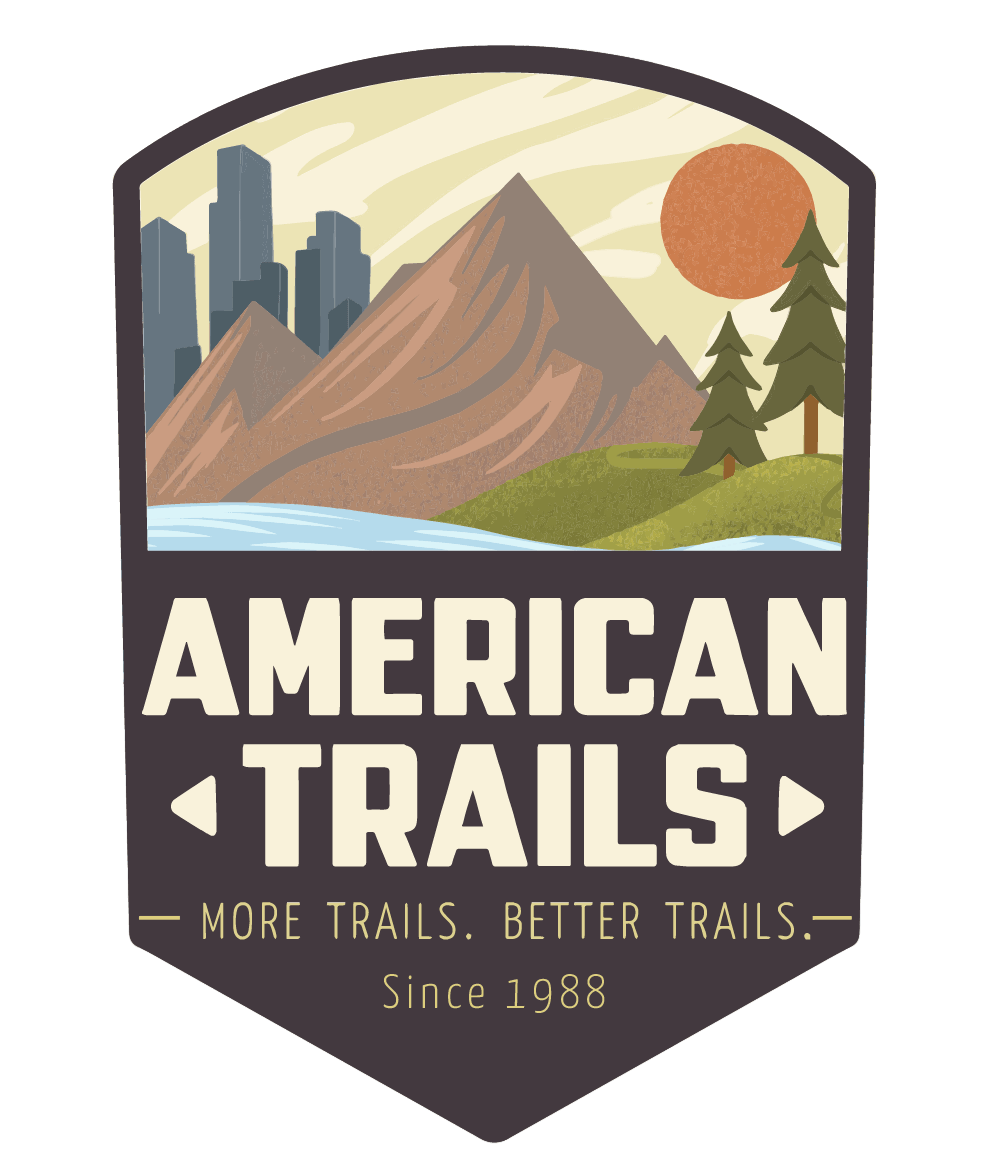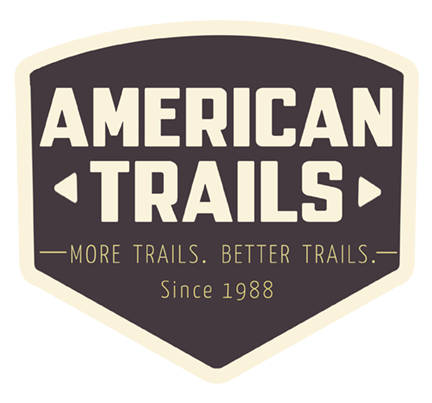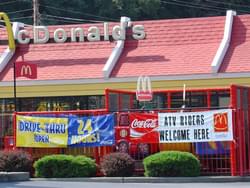




An interview with Bill Reed, Marketing Specialist for the Hatfield-McCoy Regional Recreation Authority.
by Karen Umphress, Owner, UP! Outside

My husband Tom and I recently visited the Hatfield-McCoy Trail System. We took a break from riding one afternoon to have lunch at a restaurant in the town of Gilbert, WV. During the lunch, we started talking with restaurant owner about the trail system and the impact it made on the people of the town.
The thing that really hit me was the pride in the community that has grown as a direct result from the trail system. We tend to focus on the economic stimulus that the trail system can add to the community, but it is really just the beginning of the positive affects that can come from a well run trail system.
To get more of the story, I sat down with Bill Reed, the Marketing Specialist for the Hatfield-McCoy Regional Recreation Authority as well as a business owner in the town of Gilbert. He was kind enough to answer some questions for me.
Q: Describe the Hatfield-McCoy trail system.
Reed: The Hatfield-McCoy trail system is a multi use trail system open to all non-motorized and motorized recreation with the exception of full sized vehicles. Its project area is 9 counties in southern West Virginia, encompassing 6 trail systems with a total of approximately 500 miles. The trails systems are: Indian Ridge, Buffalo Mountain, Dingess Rum, Pinnacle Creek, Browning Fork, and Little Coal River.
Q: Who uses the trails system?
Reed: While the trail system is classified as a multi use recreational area, due to the terrain and the mileage, it is primarily used by Off-Highway Motorcycles, All Terrain Vehicles, and Utility Trade Vehicles.
Q: What are the economic benefits of the trail system?
Reed: The Hatfield-McCoy trail system has had a tremendous economic impact to Southern West Virginia. Its was created to provide economic diversification to the southern counties that had seen their economy dwindle from a decrease in natural resource extraction. Towns and municipalities that seemed to have been drying up have a new burst in energy. According to a recent economic impact study, the trail system brings in an average of $7.2 million per year into the local economy, resulting in $670,000 worth of tax revenues that have been added to the State’s coffers.
Q: How has this boost profited those southern counties?
Reed: Where the communities and areas that are connected to the trail system were previously experiencing a decline; those communities and areas are now experiencing new businesses and opportunities popping up at an amazing rate. This is providing numerous amounts of new jobs; which in turn provides increased avenues for the younger generations to stay in the state and to prosper.
Q: How has the increased prosperity affected the communities?
Reed: I think that the communities and the areas have a new ray of hope. They see a new avenue for income that we have never had before. They openly embrace the tourism and all of the benefits that it has to offer. In times previous, after high school the youth had few options. They either went into the resource extraction industry, they went to college, or they moved out of the area for another type of trade. With the addition of the tourism industry, the diversity of choices in job opportunities has greatly increased. They are coming back to the community and assisting their parents in running new businesses such as lodging, restaurants, and outfitter services; just to name a few.
Q: What types of people come to recreate in the Hatfield McCoy trail system?
Reed: Most of the type of people that we see who come to the Hatfield-McCoy are family oriented, professional, and courteous. They recognize the opportunity that we have afforded to them and they are grateful for it. They treat our area, our rules, and our people with the utmost respect.
Q: How does the community react to the influx of travelers?
Reed: Initially, there was a faction of people that were skeptical. But after seeing the type of people that come into the area for recreation, and the increase in tourism dollars generated, they now greet them with open arms.
The Hatfield-McCoy Trail System is a statutory corporation created by West Virginia legislation for the purpose of economic development through tourism in nine southern West Virginia counties. Bill invites everyone to check out the Hatfield McCoy communities for a place of wonderful trails and opportunities. Their website is www.TrailsHeaven.com.
2023 Economic Contribution of Off-Highway Vehicle Recreation in Colorado
posted Apr 24, 2024
Colorado offers unique opportunities for motorized recreation throughout much of the state. As such, the sport and industry of motorized recreation has increased in popularity in Colorado, both for residents and non-residents. Abt Global, LLC (Abt) evaluated the economic contribution of motorized recreation throughout Colorado for the 2022–2023 season (July 1, 2022 through June 30, 2023). This study is an update based on a previously conducted study, completed in December 2016, that estimated the economic contribution for the 2014–2015 season, referred to as the “2016 study” in this report.
Wisconsin ATV - UTV 2023 Economic Impact Report
posted Apr 24, 2024
In 2023, ATV/UTV riders in Wisconsin were responsible for generating an estimated $4.2 billion in direct economic activity, supporting the creation of 25,845 jobs. This spending was distributed across a wide range of industries including motor vehicle dealers, lodging facilities, restaurants, gas stations, and retail stores. The study provides detailed insights into the scope and size of Wisconsin’s ATV/UTV industry, demonstrating its significant economic footprint.
Bridging the Urban-Rural Economic Divide
posted Oct 26, 2023
It’s time for the narrative to shift from urban vs. rural to a shared economic future. Bridging the economic divide between urban and rural areas will require states, regions and localities to understand and bolster the relationship between urban and rural areas in economically meaningful and strategic ways.
Great Allegheny Passage Economic Impact Report
posted Oct 19, 2023
This report was developed by Fourth Economy in partnership with the Great Allegheny Passage Conservancy (formerly the Allegheny Trail Alliance). Research was conducted between the fall of 2020 and the spring of 2021.
2,015 views • posted 03/05/2018